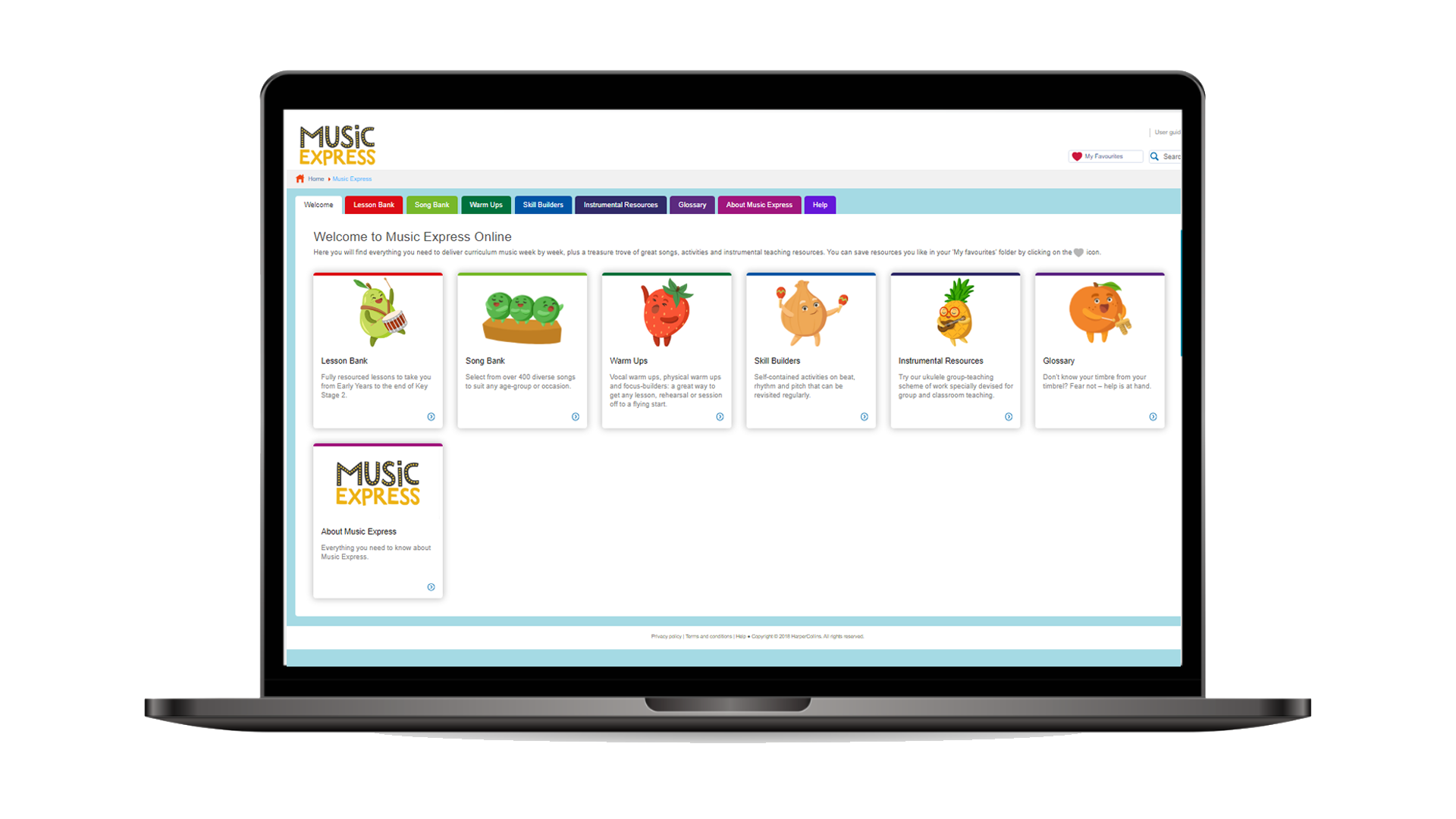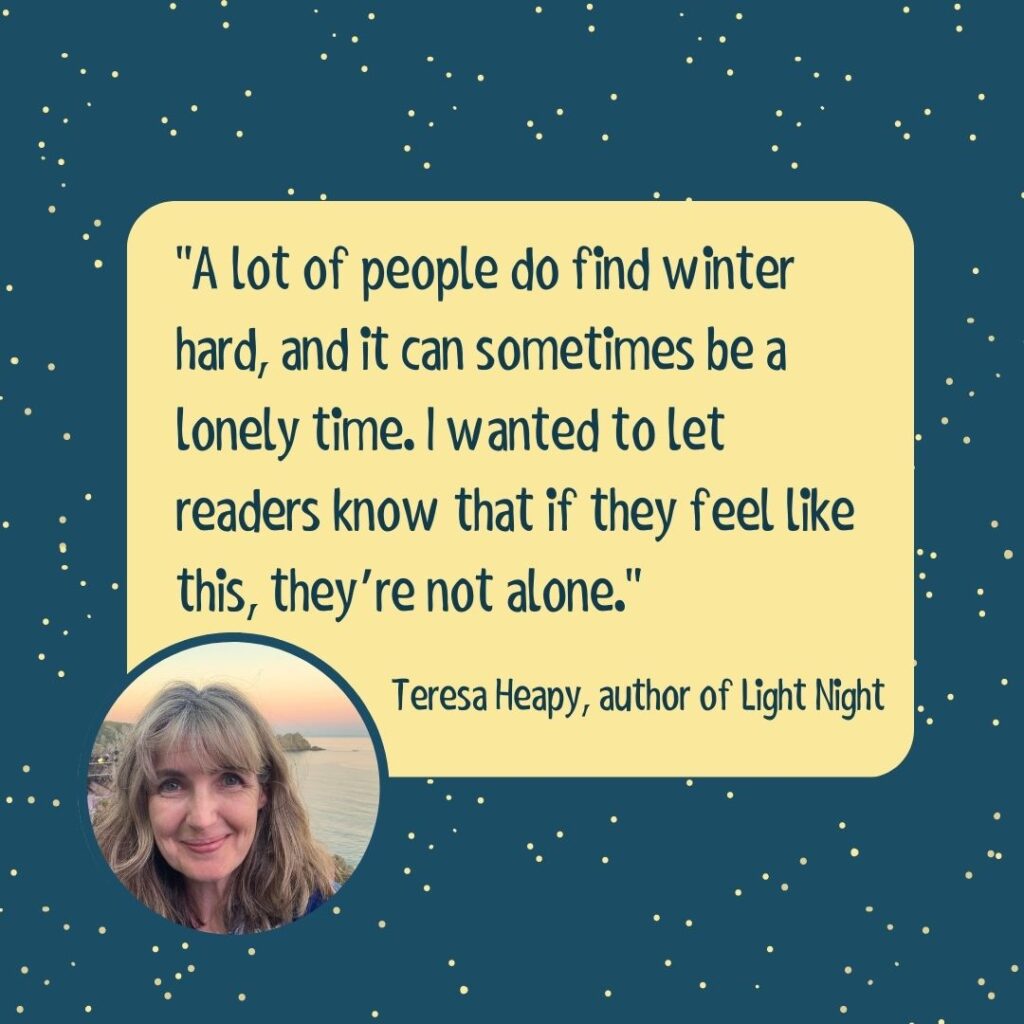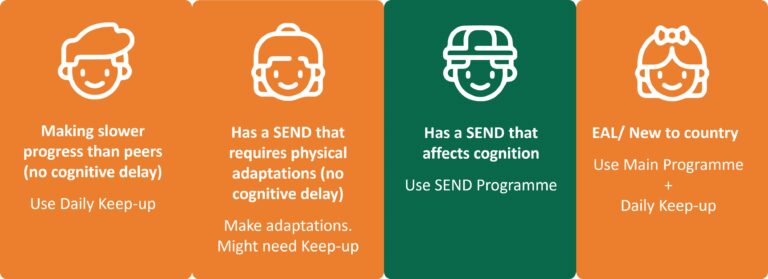As we welcome all children back into school, during the recovery from Covid-19 lockdown measures, they will experience unfamiliar and ongoing changes to their curriculum and ways of teaching to keep them safe. The benefits of music have been well-researched and documented and show that carefully planned music provision has the potential to support children’s emotional well-being during these disturbing times, providing a positive sense of community, confidence and enjoyment and an expressive outlet. But how can we alleviate some of the effects of this unsettling time through music teaching while observing the current safety guidelines?
The following general ideas, followed by specific examples for each age range, show how you can make simple adaptations to the music curriculum, tailored to your own school setting, which ensure children still experience vibrant music-making across the primary age range.
Please note: As the scientific research continues you will need to observe the latest government guidelines as they change.
Singing
Singing together is uplifting and an opportunity for children to express themselves using their own personal instrument, but there are some concerns that, as well as the typical close contact of choirs, the act of singing increases aerosols, risking spread of the virus. To reduce this risk you could try any combination of these steps:
In the classroom
- provide good ventilation by opening windows and doors
- all stand with relevant spacing, facing the teacher
- hum the melody of new and familiar songs with relaxed lips
- learn to sign songs while using a ‘thinking voice’ or humming the melody
- chant the lyrics in rhythm with and without accompaniment. NB Remind children that chanting and vocalised sounds should be no louder than gentle conversational speech.
In the hall or outside
- stand in a large circle at the relevant distances apart facing inwards to hum then outwards to sing, using aural skills to blend voices
- stand in two straight lines, back to back with relevant spacing, to chant or sing.
Using instruments
The risks of contamination by shared instruments means that, for the moment, many schools are not using instruments at all. Children can use a wide range of body percussion sounds for accompanying and creating music. Practise and develop rhythm skills with hand claps, toe taps, thigh slaps, chest thumps, finger clicks and many more the children can discover for themselves.
However, while class groups remain small, you may have sufficient small hand-held percussion instruments, like egg shakers, claves, chopsticks, small hand drums to consider allocating one instrument per child. This could form part of their ‘essentials pack’, for their sole use, along with their pencil, paper and glue stick! You could even circulate them by disinfecting at the end of the week, then re-allocating, so that children have a variety of instruments over time.
Listening and composing
Listening to music and composing are both important mediums for expression, feelings of control, ownership and achievement. Improvisations using the voice and body percussion can be exciting and invigorating even when performed following the suggested restrictions above!
These examples are taken from Music Express, an award-winning educational resource used by thousands of EYFS practitioners and primary school teachers to deliver curriculum music.
Follow these examples which explore the ways I have suggested of keeping music vibrant in our schools until we can safely return to a full curriculum, hopefully, in the not-too-distant future.
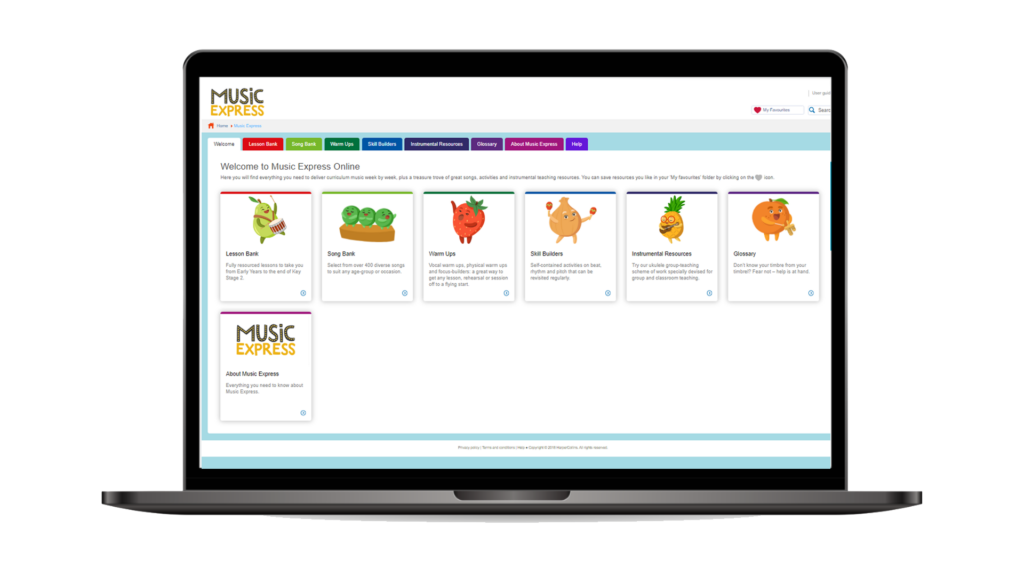
Year 2
Warm ups (Physical warm ups)
- Learn the physical warm up chants Banana Splits and Mashed Potato and play Busy Beans to enliven the children indoors or outdoors!
Skill Builders (Beat & Rhythm)
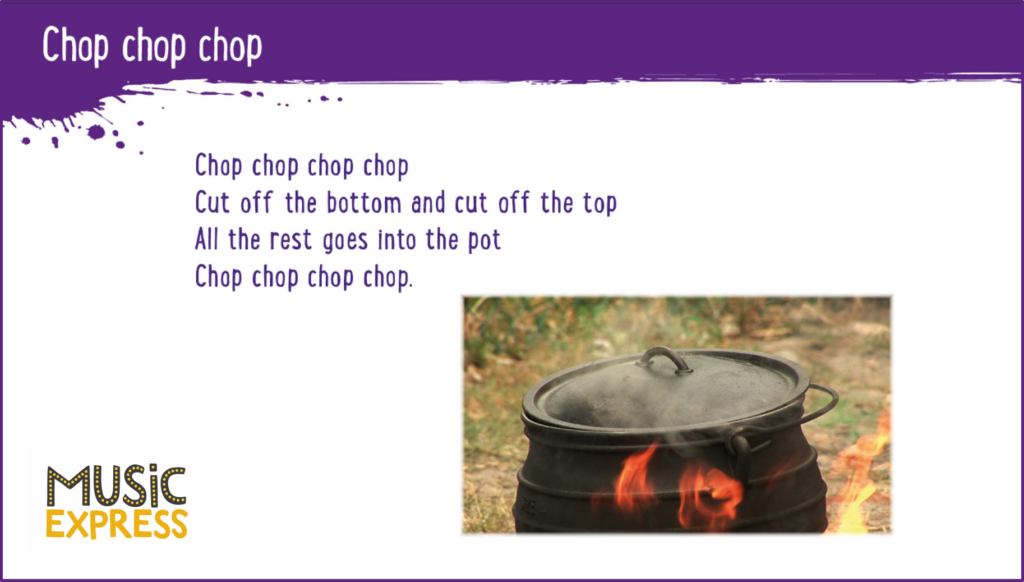
- Chant A Plate of Potatoes (Beat) together, then in two groups as a call and response. Choose two different body percussion actions, one to accompany the leader lines with a steady beat, and another for the rhythm of the response lyrics, e.g. stamp on the beat for the leader lines; clap the rhythms of the response lyrics. Make up new rhyming lyrics, e.g. crispy chips, salty lips.
- Chant Chop Chop Chop (Rhythm) and, as a class, or individually, create vegetable word rhythms to perform on body percussion.
Song Bank
- Learn how to deliver a signed performance of the song, Swim, little fishy, swim. Hum the melody as you perform the signed version with the video or performance track.
Lesson Bank
Unit ‘Toys’, lesson ‘Toys Moving’
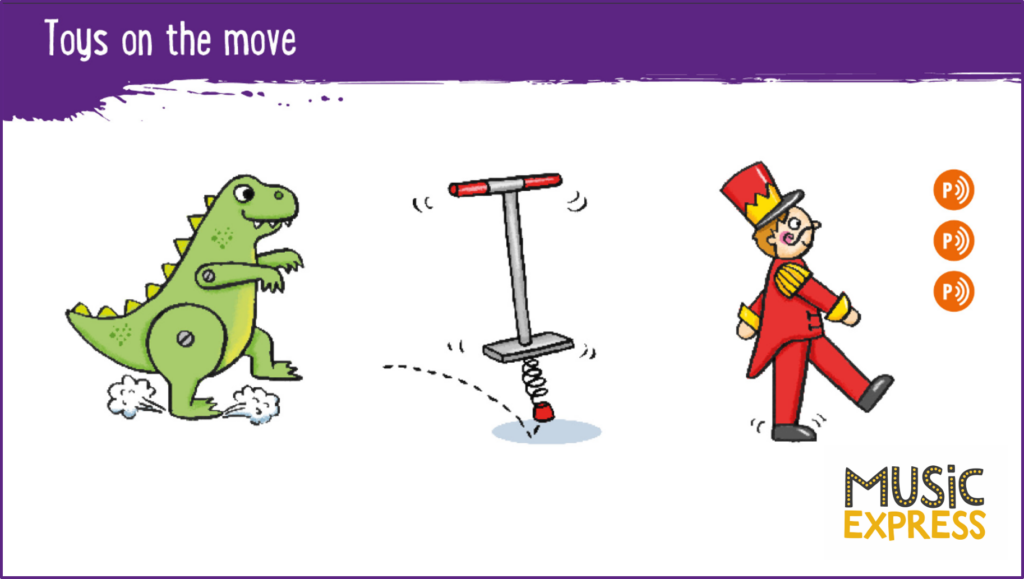
- Listen to pieces of music at different tempi and move on the spot to match the steady beats.
Unit ‘Number’, lesson ‘Schiazarula Marazula ostinato’
- Watch the video to learn the body percussion sequence and perform it with the music.
- Follow notation to play a steady beat on body percussion.
- Play a body percussion ostinato then create and notate a new pattern to accompany the music.
Unit ‘Weather’, lesson ‘Wintry weather’
- Learn the chant, actions and ostinato accompaniments.
- Listen to Vivaldi’s Winter and Winter sonnet and discuss how the composer uses instruments to describe the seasons.
Year 3
Warm ups (Physical warm ups)
- Watch the Hello Body! video to learn this short physical warm up to wake the body, then use it at any time of the day, inside or outside.
Skill Builders (Rhythm)
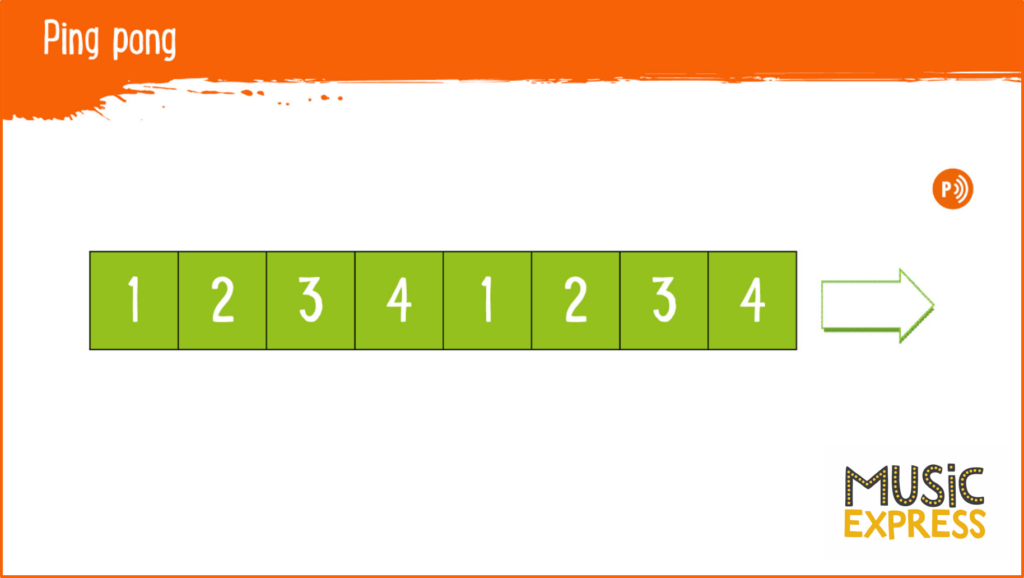
- Play a listening game in Ping Pong (Beat) (4 activities). Tap a steady 4-beat count to the music, then listen again.
- Each time you hear the finger cymbal or wood block sound clap on the following beat.
- Copy the Indian dance poses together as a class, then play a games of statues, indoors or out. On the spot, individually move from one pose to another on the finger cymbal or woodblock signal.
Song Bank
- Follow the notation to join in with the claps as you listen to the first section of Muscles. All chant the call and response section together, then in two groups, or with an individual leader.
- Outside or indoors, add whole body actions on the spot to the call and response section.
Lesson Bank
Unit ‘Environment’, lesson ‘My place’
- Watch the video performance of The sound collector.
- Use the notation to improvise sounds for each example, using vocal or body percussion sounds. Perform the sounds with the poem.
Unit ‘Poetry’, lesson ‘Sounds’
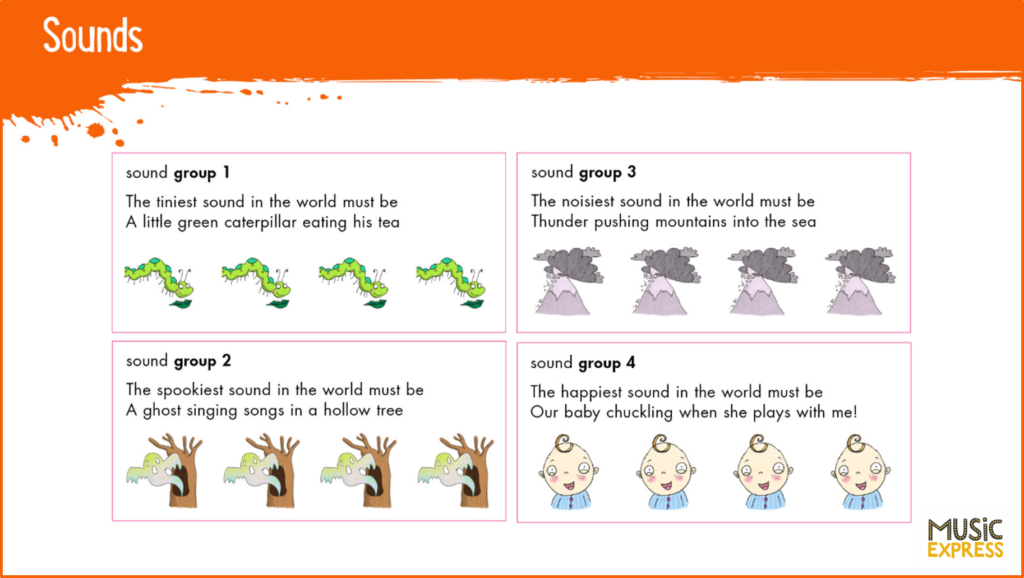
- Watch the video to listen to the poem Sounds by Irene Rawnsley. Look at the illustrated text and add silent actions then create a class performance of the poem. Choose four vocal or body percussion sounds to represent each of the four sounds described in the text.
- Perform the poem with the prepared sounds.
Year 4
Warm ups (Physical warm ups)
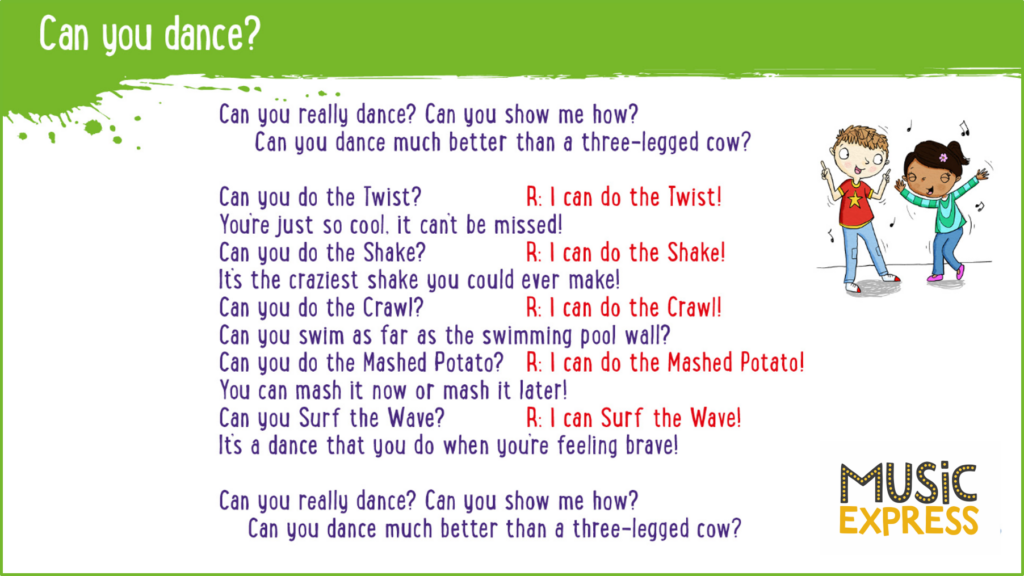
- Learn the fun call and response chant, Can you Dance? to show off your dance moves and warm up the whole body. Ideal for outdoors or inside in a large space.
Skill Builders (Beat and Rhythm)
- Learn to direct an orchestra like a professional conductor with Conducting (Beat) (4 activities). Listen to themes from Beethoven’s 5th symphony as you learn how to conduct two beats in a bar.
- Conduct two beats in a bar as you listen to a piece based on themes from Vivaldi’s Four Seasons in Have a Rest (Rhythm). Add repeated body percussion rhythm patterns to a steady beat.
Song Bank
- Listen to a performance of the poem, From a Railway Carriage, by Robert Louis Stevenson. Learn the poem and chant it as a class. Create your own phrases to add as a vocal ostinato accompaniment.
- Add syncopated vocal rhythms over a steady beat in Where is the Beat?
Lesson Bank
Unit ‘Poetry’, lesson ‘Hand on the bridge’
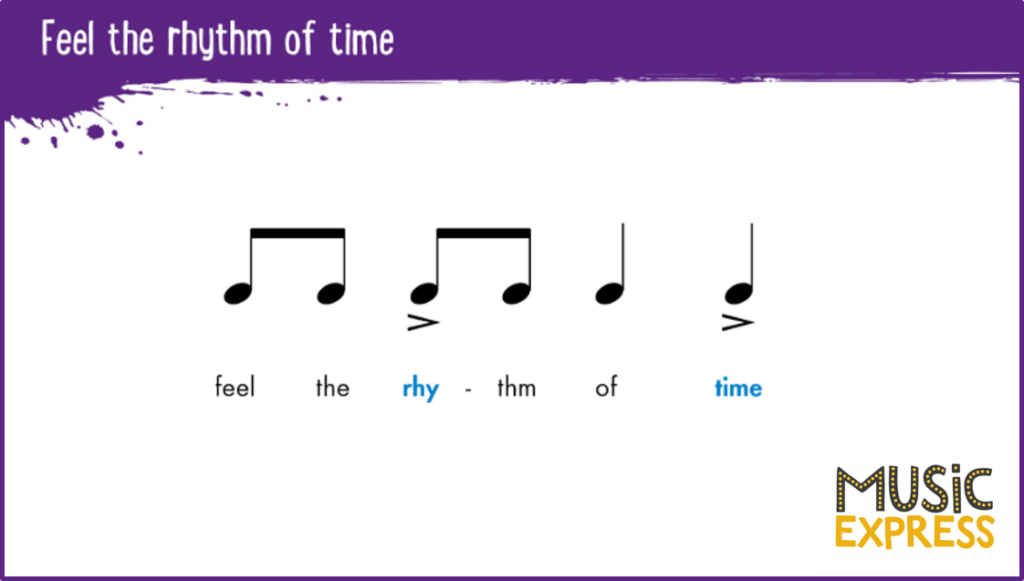
- Watch the video performance of the poem Hand on the bridge to copy and learn the hand movements.
- Display the lyrics and play the audio recording (Activity 1, Step 2) to perform the hand movements as you listen.
- Display the Feel the rhythm of time ostinato and all join in whispering the ostinato as you listen to the poem. Choose a body percussion sound to play the ostinato, e.g. tapping knees or fingers on palms. Perform the ostinato and body percussion together as you listen to the poem.
- In two groups, combine the poem with the ostinato, standing spaced back to back in two lines to form a ‘bridge’. Group 1 performs the poem three times with the hand actions. Group 2 joins in with the body percussion and whispered ostinato in verse 2 and continues to the end of the performance. This is ideal for performing in a large space or outdoors.
- When the children are confident, you may like to divide the poem group into two groups to perform it in canon as shown on the display of the Hand on the bridge performance score.
Unit ‘Recycling’, lesson ‘ Paper groove’
- Watch a video, Paper tree, to hear a soundtrack accompanying a tree’s journey from tree to mill. Use waste paper to improvise an accompaniment for the movie.
- Watch Paper music to see how the soundtrack sounds were made from junk materials, then follow notation to make your own soundtrack.
- Use paper to accompany the Jazz Junk song with a snare drum rhythm. Listen to the song and accompany with this groove or make up your own paper rhythms.
Year 5
Warm ups (Physical warm ups)
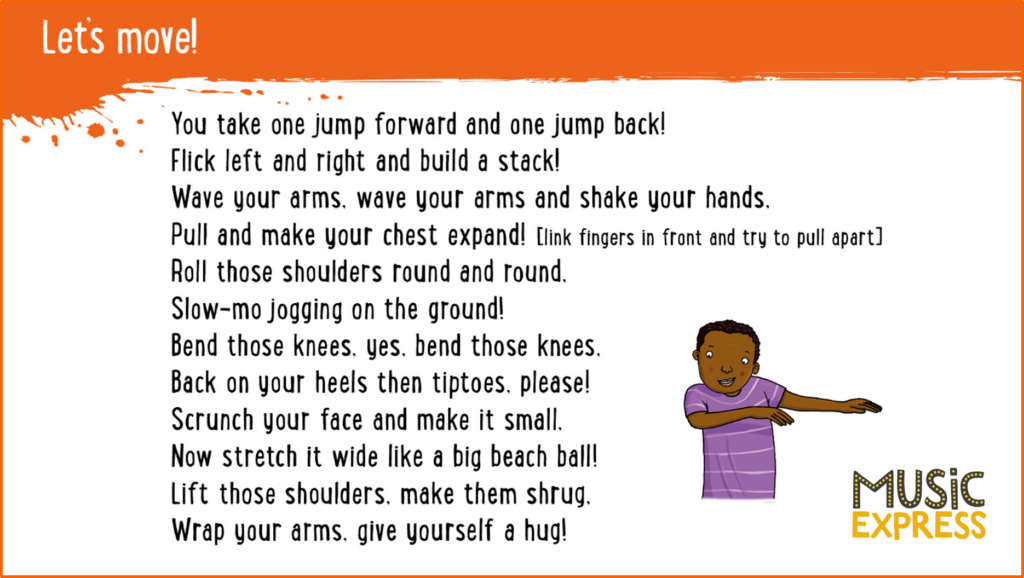
- Warm up the whole body with Let’s Move, indoors in a large space or outdoors. Chant each line, asking the class to copy with the matching actions.
- Ask individual children to make up two new rhyming lines and perform these as you copy each new idea, e.g. Bump those hips from left to right, Dance on the spot till you feel all right!
Skill Builders (Beat and Rhythm)
- Count, then move to the beat in a fun piece of country-style music, Country chicken (Beat), (3 activities). Recognise the changes of metre between three and four beats in a bar.
- Notice the tempo changes in Andean bird (Beat) (4 activities) as you count 3 beats in a bar. Add taps on the beats, then four body percussion rhythm patterns to accompany each section of the music.
- Explore the rhythm of the panpipe melody and four body percussion accompaniments in Andean bird dance (Rhythm). Read rhythm notation to perform the melody and accompaniment with the music as a class, or in two groups.
Song Bank
- Watch the video and learn how to perform a signed version of the song Change the World a Little Every Day. Perform the whole song, humming the melody as you sign along with the performance track.
- Learn the fun echo chant Pizza and perform in two group or with a soloist as leader. Each individual child makes up a repeating phrase with their favourite topping or most ridiculous recipe, e.g. cheese and pepperoni, or chocolate and squirty cream! Layer these rhythms with the backing track as an accompaniment, then perform the whole chant and topping word rhythms unaccompanied.
Lesson Bank
Unit ‘Keeping Healthy’, lesson ‘Body-Popping Skeleton’
- Learn the chant, Heartbeat, chanting and moving on the spot at three different tempi.
- Watch the videos in Body-Popping Skeleton and Body-Popping Performance to learn the skeleton dance moves and perform these with the audio performance track.
Unit ‘At the movies’, lesson ‘Movie music’
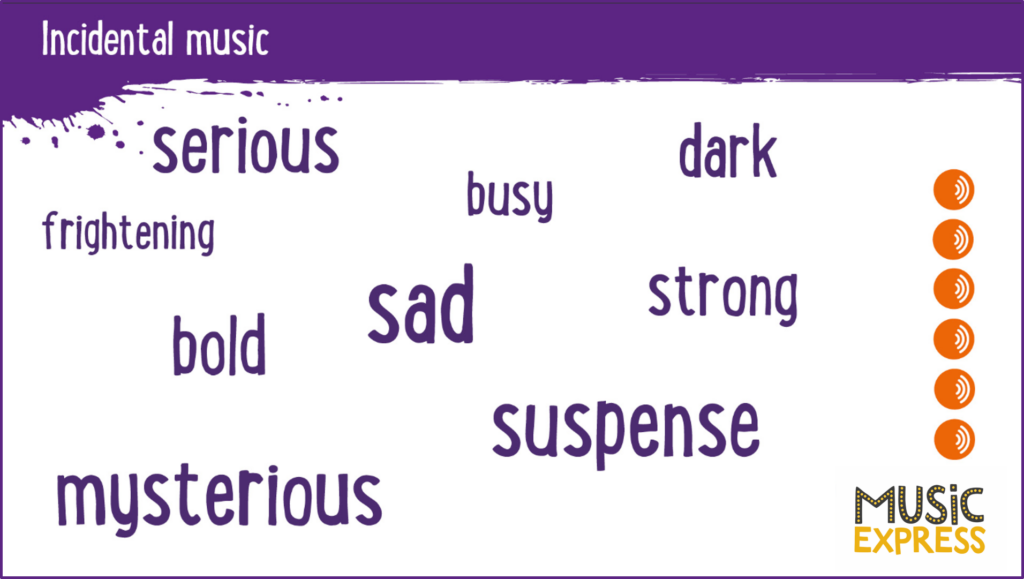
- Watch the video, Man in a tunnel, with five different music soundtracks, then discuss each of their effects.
- Learn the chant fANTastic ANTics, then explore musical clichés as individuals overdub the video with conversations.
- Use graphic notation to create a new music soundtrack. Select musical cliché sounds using body percussion, voices or any classroom resources the children have access to. Perform with the video, fANTastic ANTics.
This blog is written by Helen MacGregor, an award-winning music education author with many years’ experience of teaching music in Primary schools, teacher-training and leading children’s music festivals and holiday courses. She is passionate about giving all children the opportunity to experience and enjoy making music. Her publications include the ‘Listening to Music’ series (Primary Music Magazine Best Listening Resource 2019) and she is co-author of the Music Express scheme of work and three of Roald Dahl’s Revolting Rhyme musicals.
Music Express is an online resource for teaching primary music that’s easy to use and accessible to non-musicians as well as music specialists.
[mks_button size=”large” title=”Find out more about Music Express” style=”rounded” url=”https://collins.co.uk/pages/primary-music-music-express” target=”_blank” bg_color=”#eabb36″ txt_color=”#FFFFFF” icon=”” icon_type=”” nofollow=”0″]
